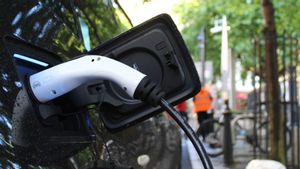JAKARTA - A Huawei engineer from China, took advantage of his personal experience of falling while riding a bicycle to design an AI-powered autonomous bicycle. This bike is equipped with sensors and actuators so that it can balance and move by itself.
The project's lead engineer, Zhihui Jun, started working on the project after he was injured in a bicycle accident. Jun, a Huawei employee, and his colleagues used the company's technology to develop bicycles. This road bike is equipped with two brushless motors, steering gear, RGBD sensor, accelerometer, gyroscope, LiDAR sensor and airplane model battery to power the equipment.
Sensors collect data about the environment, identify objects, their distances, and the bike's relative position and speed. The data is used to control the end-effectors, including motors to drive the rear wheels and powerful servo motors for steering. The AI calculations are handled by the Huawei Ascend 310 processor. Jun said today's bikes are capable of perceptive thinking and decision-making on their own.
The grip-mounted RGBD sensor measures the distance to objects in front while an airplane model battery keeps the electronics running for two to three hours. The rest of the hardware receives instructions from the Atlas Pi computer based on the Espressif ESP32 microcontroller.
The most interesting part is the self-balancing technology which consists of sensors that measure the bicycle's rotation (tilt angle) which feeds real-time data to control the reaction of the reaction wheel. Basically it's like a disc attached to a motor that can quickly vary its acceleration/deceleration. Furthermore, thanks to AI technology, the bike can maintain balance and even offset off-center loads such as bags on the handlebars.
The reaction wheel has also been considered an enabler for propulsion in space. A 2013 project by Gajamohan Mohanarajah, called Cubli, developed a cube that uses sensors and a reaction wheel to balance on edges or corners, jump, and even "walk."
While the reaction wheel for self-balancing is not a new technology. Jun claims that this AI-powered bike has passed the real-world autopilot driving test. Certainly an impressive feat for AI, especially in a self-made project.
Interestingly, all the electronics and hardware devices mentioned above were first designed in CAD software (which looks like Autodesk Fusion360) and rigorously tested in a virtual environment before being deployed in the real world.
Jun told Designboom that the autonomous bicycle system was in development for approximately four months while he spent the weekend. "I encountered many pitfalls during that period," said Jun.
Surprisingly, Huawei engineers have also created an open-source project and uploaded all the design files to the popular GitHub repository, albeit under an unspecified license.
The English, Chinese, Japanese, Arabic, and French versions are automatically generated by the AI. So there may still be inaccuracies in translating, please always see Indonesian as our main language. (system supported by DigitalSiber.id)










